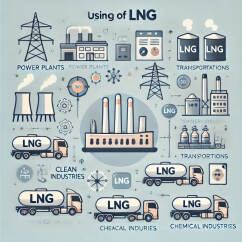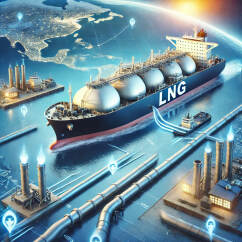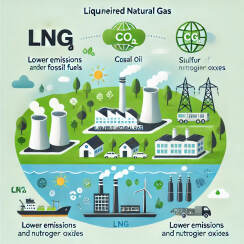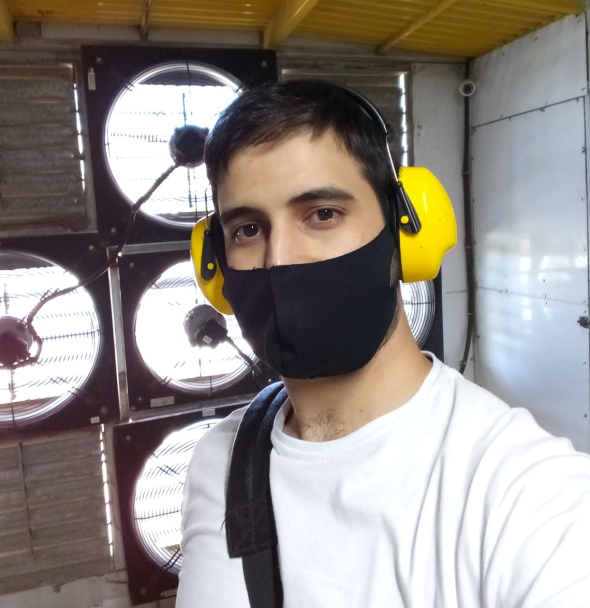Introduction to Amin Fanavar Sharif
Amin Fanavar Sharif is a leading company in the field of cryogenic technologies and liquefied natural gas (LNG) production in Iran. Established in 2012, the company has leveraged the expertise of specialists from Sharif University of Technology to design and manufacture advanced equipment, such as high-speed turboexpanders, cold box heat exchangers, and helium purification systems. Additionally, Amin Fanavar Sharif plays a crucial role in developing small-scale liquefied natural gas production units, contributing to sustainable energy supply and fuel optimization.
Afagh Architecture Studio, specializing in comprehensive design, 3D modeling, and industrial process simulation, has carried out several projects for Amin Fanavar Sharif. This collaboration aims to visually represent complex processes related to liquefied natural gas production and the design of associated facilities, including the following:
1. Animation of the Complete Fuel Cycle
2. Modeling and Designing a Large-Scale Production Unit
3. Sustainable Development Model Using Liquefied Natural Gas
Comprehensive Design and Modeling for Amin Fanavar Sharif by Afagh Architecture Studio
Another key project involved designing and modeling a village as an example of a sustainable development model utilizing liquefied natural gas. In this project, Afagh Architecture Studio designed a sustainable habitat where liquefied natural gas serves as the primary energy source for heating, cooking, and electricity generation. This model demonstrates the potential for developing remote areas through clean and sustainable energy solutions
For this project, the studio created a detailed 3D model of a large-scale liquefied natural gas production unit. The model includes all essential components of the production facility and accurately represents the related infrastructure and equipment. Additionally, to enhance the visual experience, custom music and sound effects were incorporated to create a more immersive presentation
In this project, Afagh Architecture Studio designed a comprehensive and conceptual animation of the complete liquefied natural gas fuel cycle. The animation visually simplifies and effectively illustrates the production, storage, transportation, and utilization of liquefied natural gas, enhancing audience comprehension. The visual design ensures that the technical complexities of this technology are conveyed in a smooth and engaging manner.
4. Providing all these engineering services in the form of a comprehensive executable file with navigation capabilities and the use of Virtual Reality (VR) cameras.
For this project, the studio created a detailed 3D model of a medium-scale liquefied natural gas production unit. The model includes all essential components of the production facility and accurately represents the related infrastructure and equipment. Additionally, to enhance the visual experience, custom music and sound effects were incorporated to create a more immersive presentation.
Modeling, Design, and Layout of a Liquefied Natural Gas (LNG) Production Plant
Man-hour
Five hundred and ninety (590) man-hours have been spent on the design, modeling, optimization, and delivery of this comprehensive 3D file.
Two thousand three hundred and fifty-eight (2,358) objects, components, and 3D models have been incorporated into the comprehensive file of the complete LNG fuel cycle
Oblects
projects
Twenty-two general themes, including various urban, industrial, and rural spaces, have been designed and modeled in this comprehensive 3D file
Materials
Four hundred and eighty-one different types of materials ands textures have been assigned to various surfaces in this 3D modeling file
Hectares
Nine hundred and eleven hectares is the area that has been modeled for natural, urban, and industrial environments in the comprehensive executable file
Megabytes
The optimized size of the comprehensive 3D file is 10,910 MB, enabling installation and display on personal computers and virtual reality (VR) cameras
Designing a sustainable development model using LNG and ecotourism potential in remote, pristine villages
One of the key projects in this collaboration has been the design and modeling of a village as an example of a sustainable development model using liquefied natural gas (LNG). In this project, Afaq Architectural Studio designed a model of a sustainable habitat where LNG is used as the primary energy source for heating, cooking, and electricity generation. This modeling demonstrates the potential for developing remote areas using clean and sustainable energy, while also showcasing the possibility of transforming these areas into ecotourism destinations by adhering to environmental conservation principles and responsible use of natural resources.
Cleaner:
Reduction in Emissions: LNG is one of the fossil fuels that produces fewer emissions compared to oil and coal. When burned, the production of carbon dioxide (CO2), sulfur, and nitrogen oxides (NOx) is reduced compared to other fuels, which helps in reducing air pollution and combating climate change.
Easier Transport:
Due to its liquid form at lower temperatures and pressures compared to natural gas, LNG is easier to store and transport. Therefore, it can be exported to distant regions or countries without access to natural gas resources.
More Independent from Other Sources:
For countries dependent on natural gas, LNG allows them to import gas from other countries and reduce their reliance on domestic sources. This energy independence enhances national energy security.
Suitable for Use in Various Industries:
LNG is used in various industries, such as power generation, transportation, chemical industries, and even as fuel for ships and heavy-duty trucks. This versatility has made LNG an efficient global fuel.
Strengthening Energy Security:
As different countries can produce and export LNG, this fuel can diversify energy sources for importing countries, helping reduce dependence on a single source (like oil or pipeline gas).
Cost-Effectiveness in the Long Term:
Although the initial cost of setting up LNG infrastructure may be high, LNG can serve as a more cost-effective and sustainable energy source in the long term, due to greater efficiency in the production and storage processes.
Reduction in Energy Costs:
Many LNG-importing countries have been able to lower their energy costs due to the cheaper nature of LNG compared to other energy sources, and use these savings for further economic development.
In summary, LNG, as a relatively clean, cost-effective, and transportable energy source, can be highly beneficial for countries in achieving sustainable energy goals and economic development.
Liquefied Natural Gas (LNG) has many advantages that have made it a popular and strategic energy source globally. These advantages include:



For Afagh Architecture and Engineering Studio, this project is important for several reasons:
Addressing the Energy Industry's Needs: Designing a special economic zone for LNG helps provide the necessary infrastructure for the industry.
Sustainability and Innovation: Afagh focuses on sustainable design and cutting-edge technologies, ensuring the efficient use of LNG with minimal environmental impact.
Regional Economic Growth: These projects contribute to economic development in specific areas, especially during peak demand. They also create long-term job and business opportunities, leading to positive global impacts.



